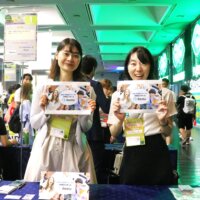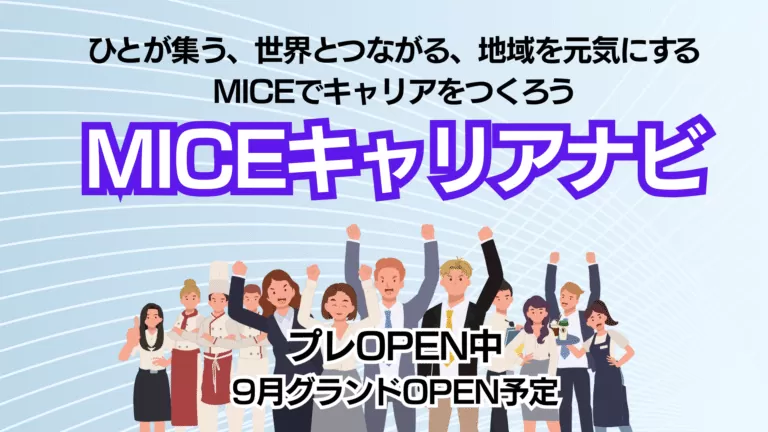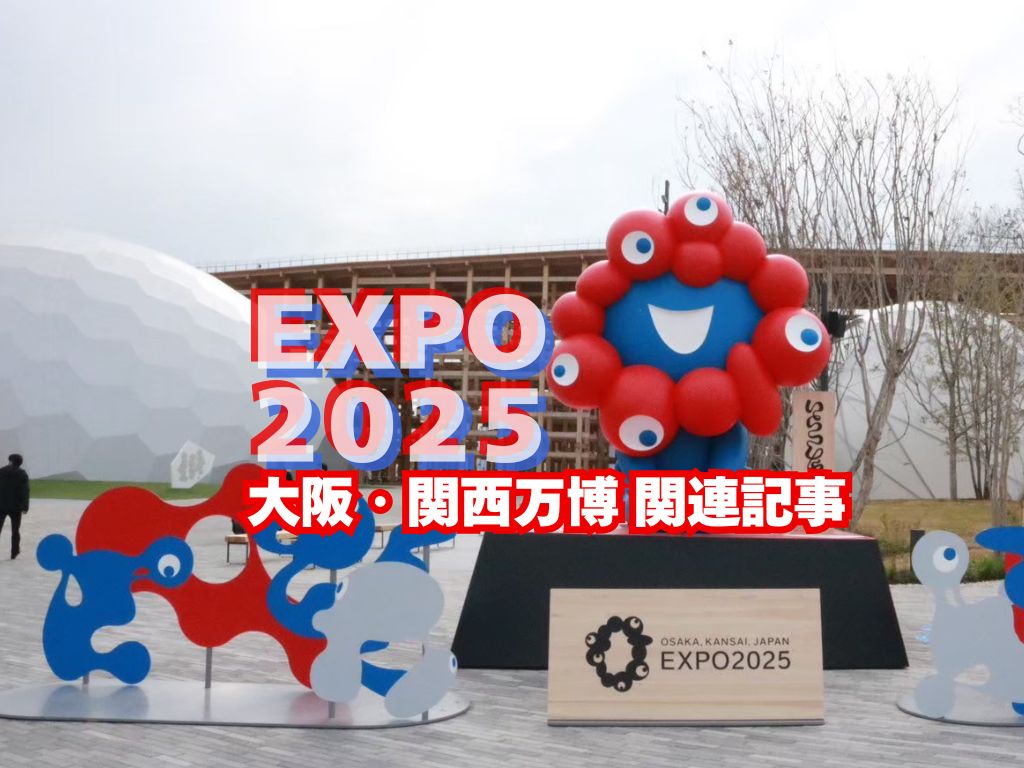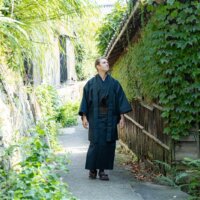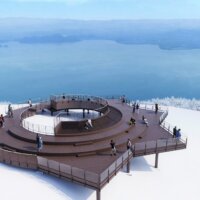
Opening Event Report: STATION Ai, Aichi–Nagoya’s Startup Support Facility, Opens — Seven Standout Features We Found On Site
I’m Fujii, Editor-in-Chief of MICE TIMES ONLINE. Are you familiar with STATION Ai (ステーション エーアイ), the startup support hub that opened on October 1, 2024 in Tsuruma Park, Nagoya, Aichi Prefecture? To commemorate the opening, an inaugural event was held from November 1 to 2, 2024. Along with coverage of that event, this article introduces seven key features of the facility. It’s recommended for those considering tenancy and for anyone who wants a detailed sense of what the place is like.
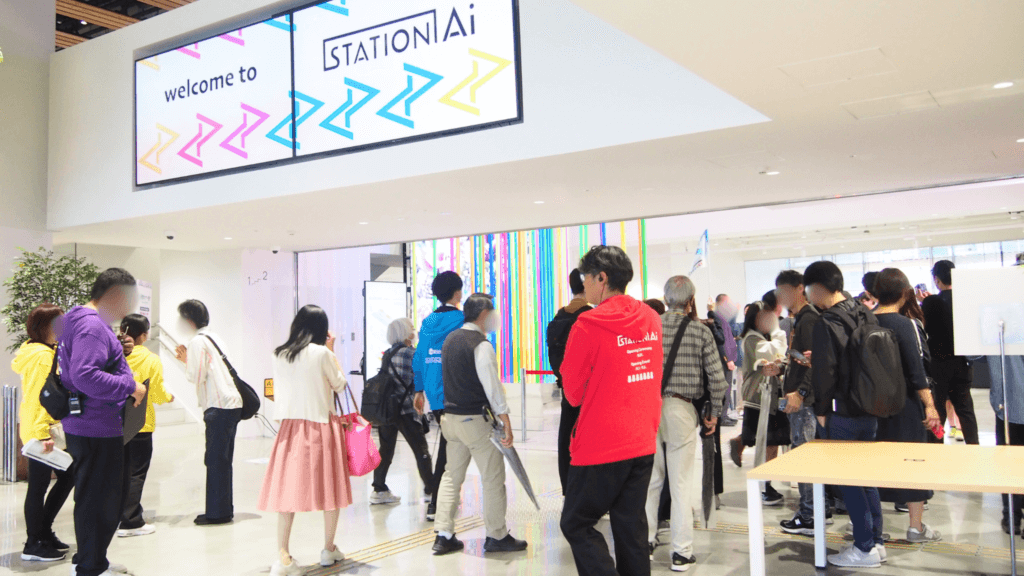
A Publicly Oriented, Business-Creation Startup Support Facility Among Japan’s Largest
STATION Ai is one of Japan’s largest open-innovation hubs, located in Tsuruma, Nagoya. It provides a range of support services aimed at fostering startup creation and growth and promoting open innovation. More than 500 startups from Japan and abroad, partner corporations, venture-capital organizations, and universities participate in STATION Ai to work on new-business creation.
In addition to offices for people engaged in launching new businesses—including startups—the facility houses a fitness gym and a tech lab, as well as publicly accessible cafés and restaurants, a hotel, event spaces, and the Aichi Startup Center (あいち創業館).
The goal is to become a hub that fuses established industries in the Aichi–Tokai area—one of Japan’s leading industrial clusters—with new businesses to create fresh value.
Source: STATION Ai website (official)
From JR Tsurumai Station, it is about an eight-minute walk to the venue. The building has seven stories above ground with a total floor area of roughly 23,000 m². Developed by Aichi Prefecture at a total cost of a little over JPY 15 billion, it is Japan’s largest startup support hub. Floors 1–2 offer event spaces and restaurants open to the general public; the 7th floor contains lodging; and floors 3–6 are member zones used by startups and other innovators.

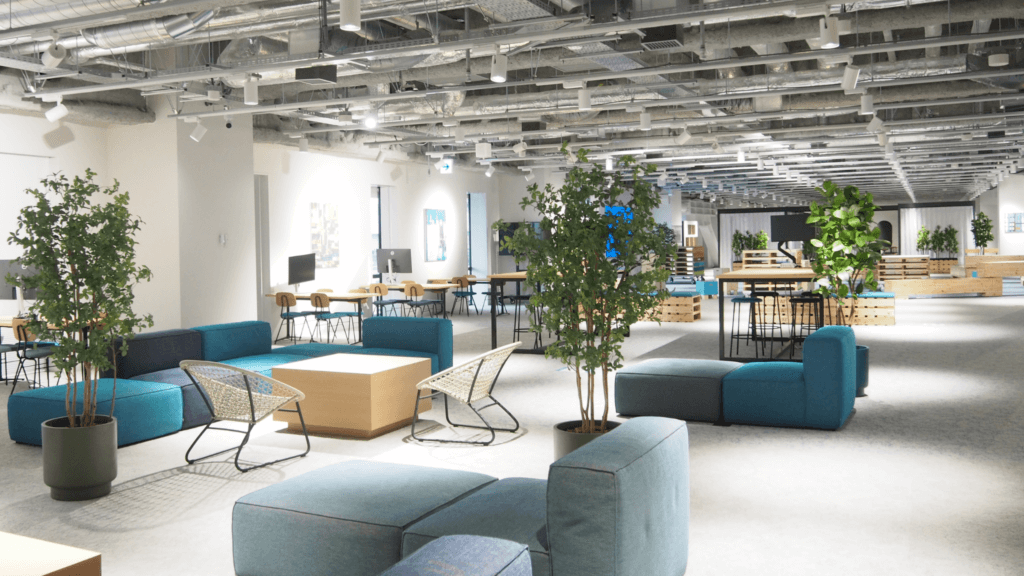
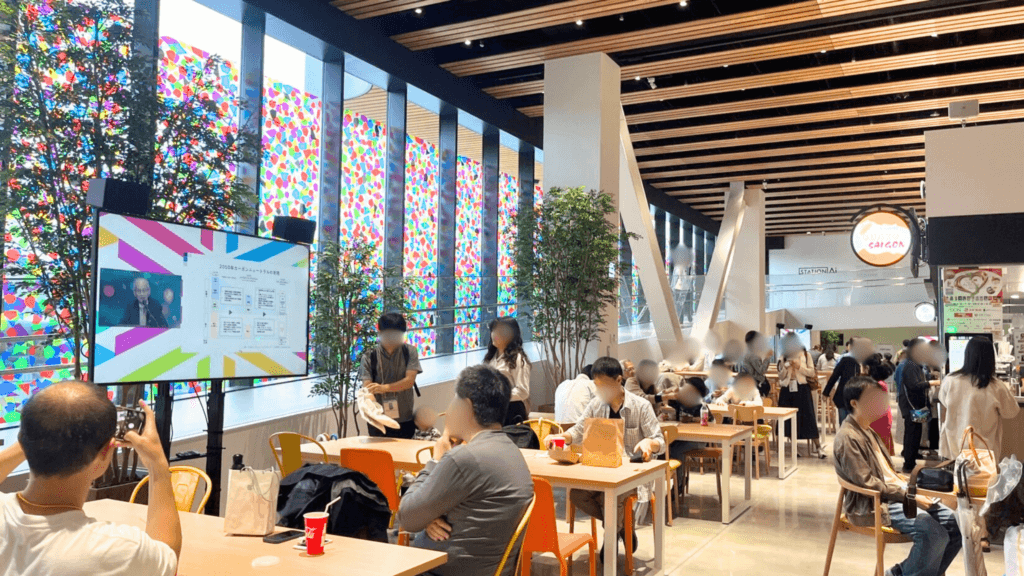
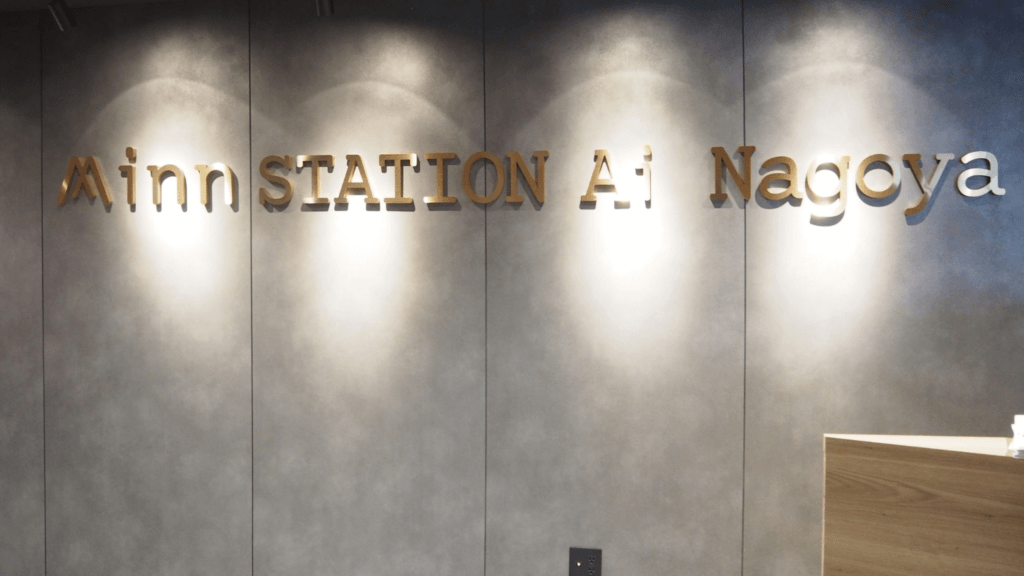
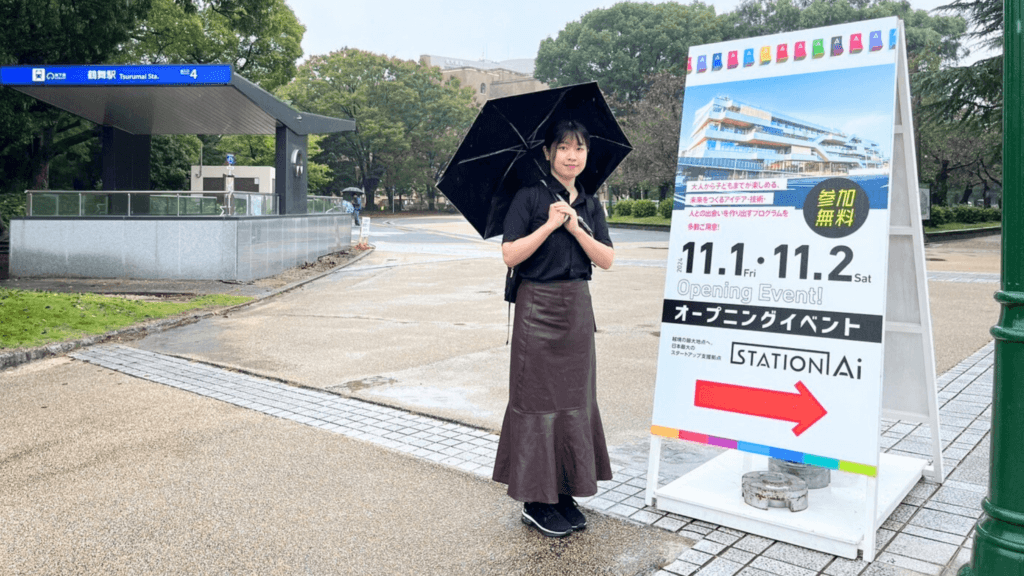
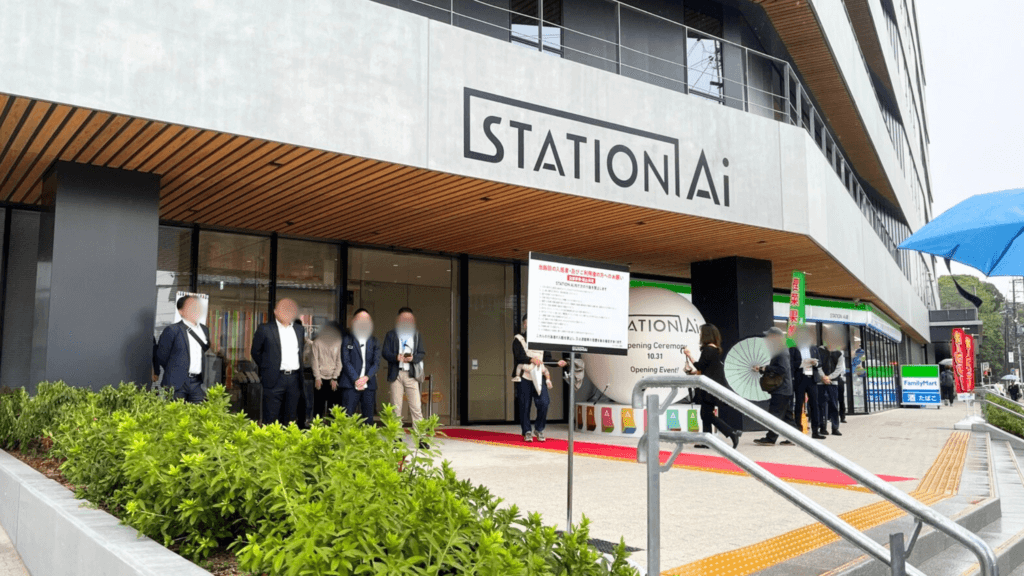
We attended the opening event on Saturday, November 2. Many members of the general public visited that day, including students and families. On Thursday, October 31 and Friday, November 1, about 2,000 businesspeople attended. We were told the event venue was so crowded there were virtually no empty seats.
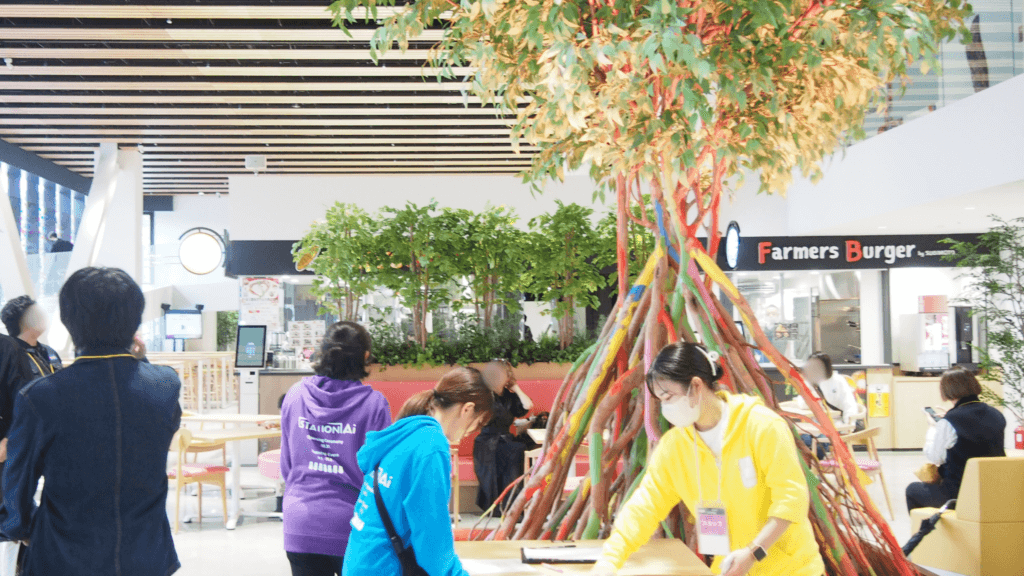
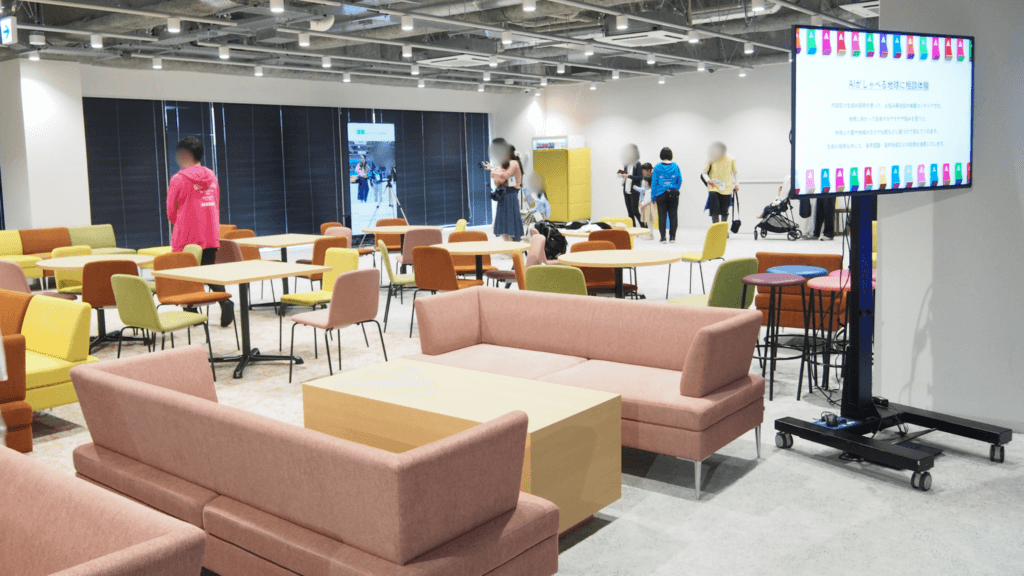
Seven Features of STATION Ai Revealed During Our On-Site Visit
We toured the facility with Mr. Ariga, Director of the Corporate Planning Department at STATION Ai, and spoke with him about the details.
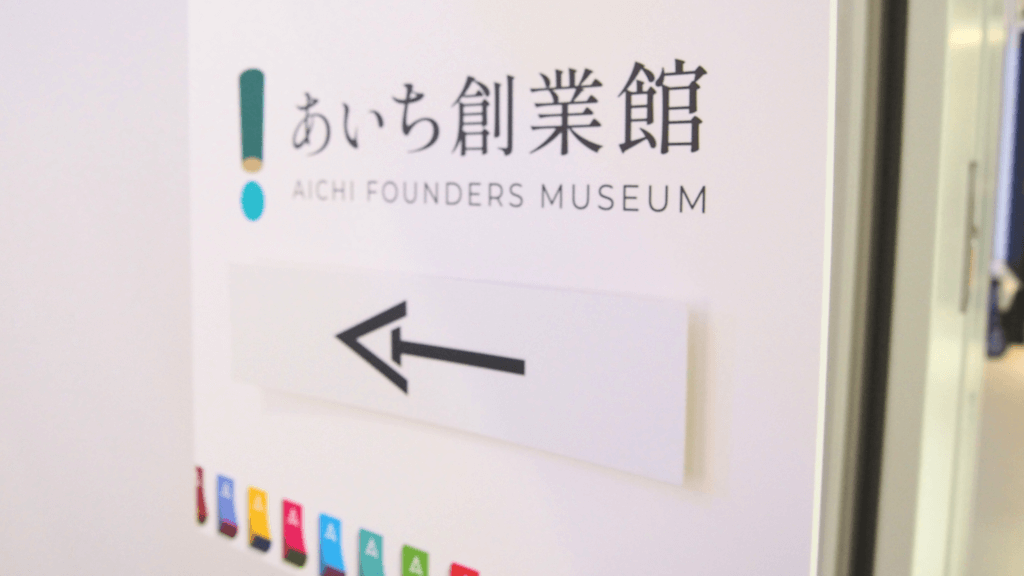
Feature 1 — Creating Opportunities for the General Public to Engage with “Founding” and Entrepreneurship
Event Spaces
Floors 1–2 are open to the general public, reflecting the facility’s role as a public-facing venue. On the 2nd floor, an airy free space that accommodates nearly 50 people is available.
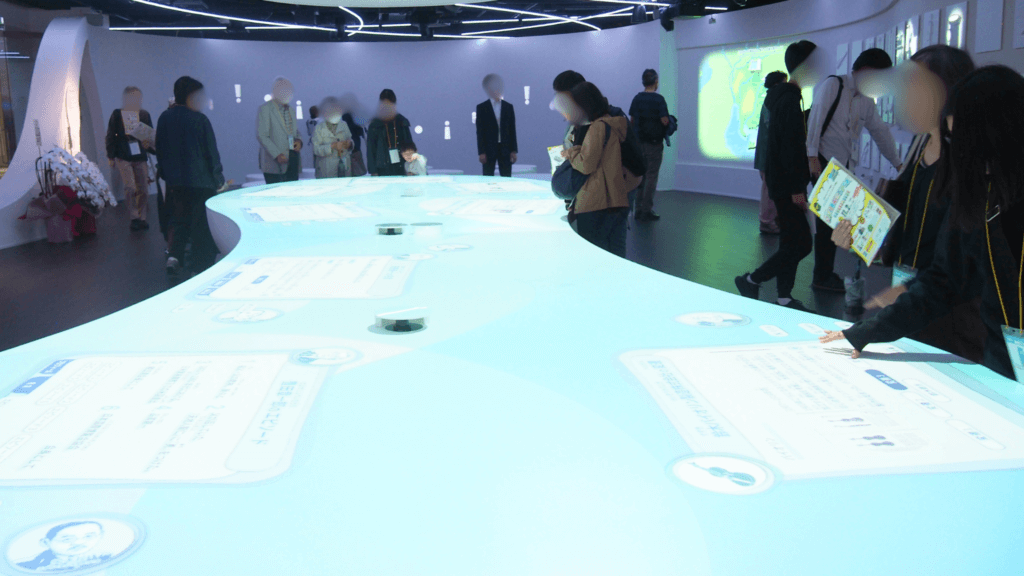
We visited the Aichi Startup Center (あいち創業館) on the 2nd floor, where visitors can enjoy learning about companies connected to Aichi Prefecture. The space features a futuristic, sci-fi–inspired design. Interactive elements—touch-triggered motion visuals and quiz content—make it engaging for adults and children alike. Multilingual switching is supported. It also works well for educational uses such as school field trips, serving as a gateway for understanding what it means to start a business or launch a venture.
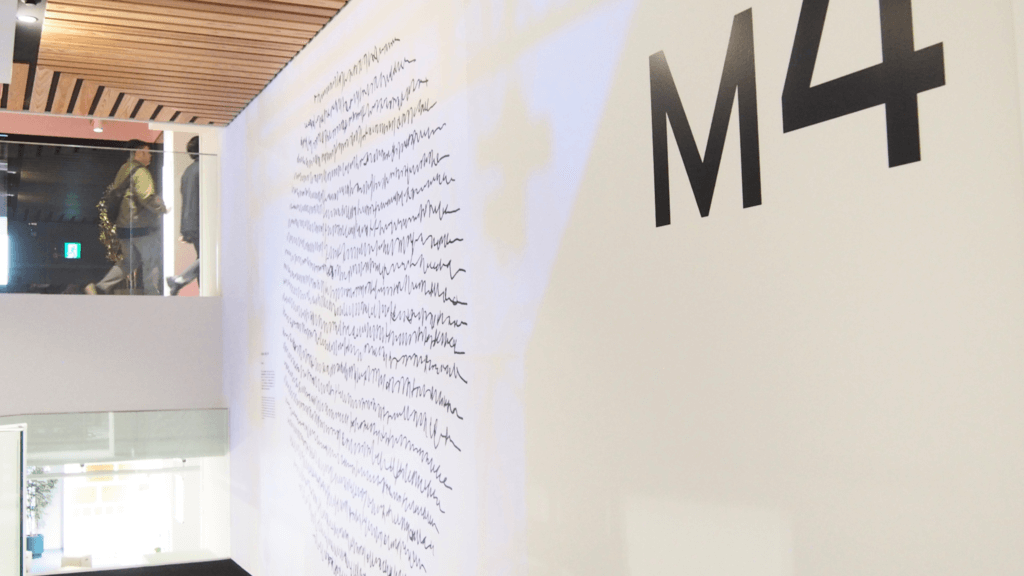
Feature 2 — A “Horizontal Atrium” That Fosters Connection. Why Do the “M Floors” Exist?
All floors are linked by ramps, with minimal walls, so not only tenants but also members of the general public can mingle easily.
Mr. Ariga: “We have M floors. They let you see what people on other floors or in neighboring spaces are doing. This is another mechanism to spark interaction and open innovation. The ramps connecting every level also reflect our idea of a ‘horizontal atrium.’”
You can hear the sounds of fun events happening on other levels drifting through the atrium void. The ceilings are not especially high, but exposing the deck reduces any sense of confinement and gives a stylish impression. One thing that caught our eye in the corporate area was semi-private spaces divided by sheer curtains. Was there a reason for this?
Mr. Ariga: “To encourage interaction, we keep partitions to a minimum. Of course, we also provide fully enclosed, high-security meeting rooms. So rest assured.”
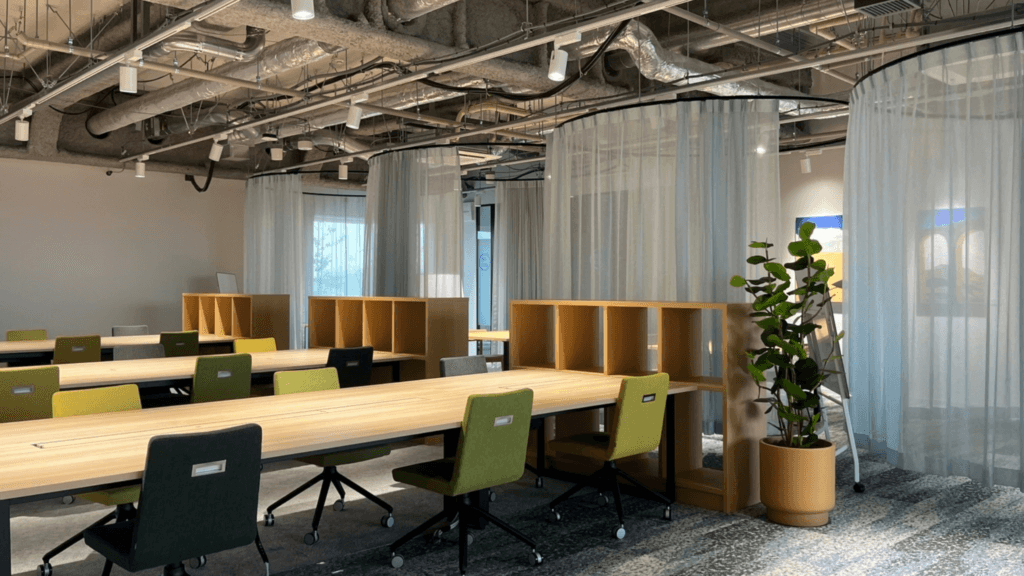
Partitions that look almost like lace curtains.
Mr. Ariga: “We also run ‘reverse pitches,’ where companies pitch their challenges and startups match them with technologies and ideas. Naturally, we step in to create touchpoints as needed, but the ideal is that tenants will interact organically. If conversations themselves become the source of ideas, then as a community, we’ve succeeded.”
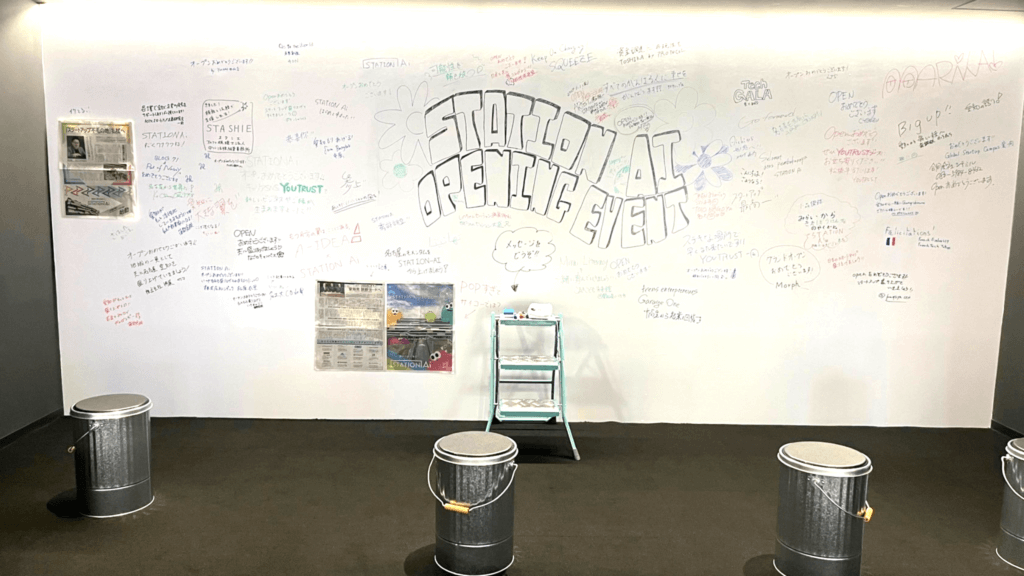
Each floor also includes places where tenants can interact; on some walls, the entire surface functions as a whiteboard.
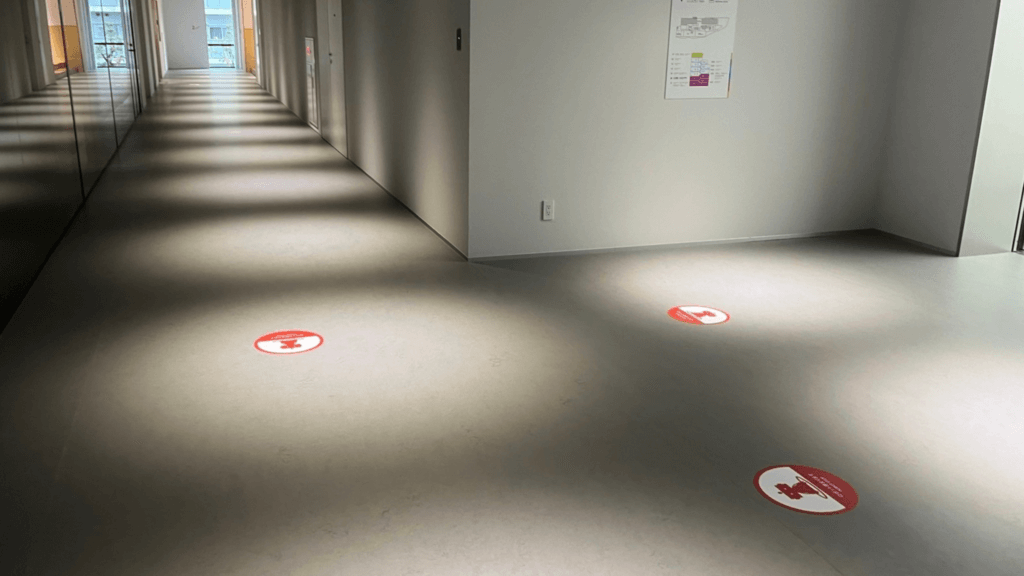
Feature 3 — The Near Future Is Already Here: Friendly to Robots, Too
Robots equipped with digital signage, floor-cleaning robots, and more—three primary robots circulate throughout the building. The entire facility is designed to be robot-friendly and to serve as a site for robot proof-of-concept trials. In a near future where humans and robots coexist, buildings like this may become more common. Spaces that are friendly to robots—barrier-free and gently sloped—also tend to be friendly to people.
Mr. Ariga: “If you try to retrofit a typical building with robot-friendly design, you run into issues like where to put charging stations, how to coordinate elevators for moving between floors, and even automatic doors that won’t respond. Because we incorporated features such as ramps from the very outset of the building’s design, true robot-friendliness is possible here.”
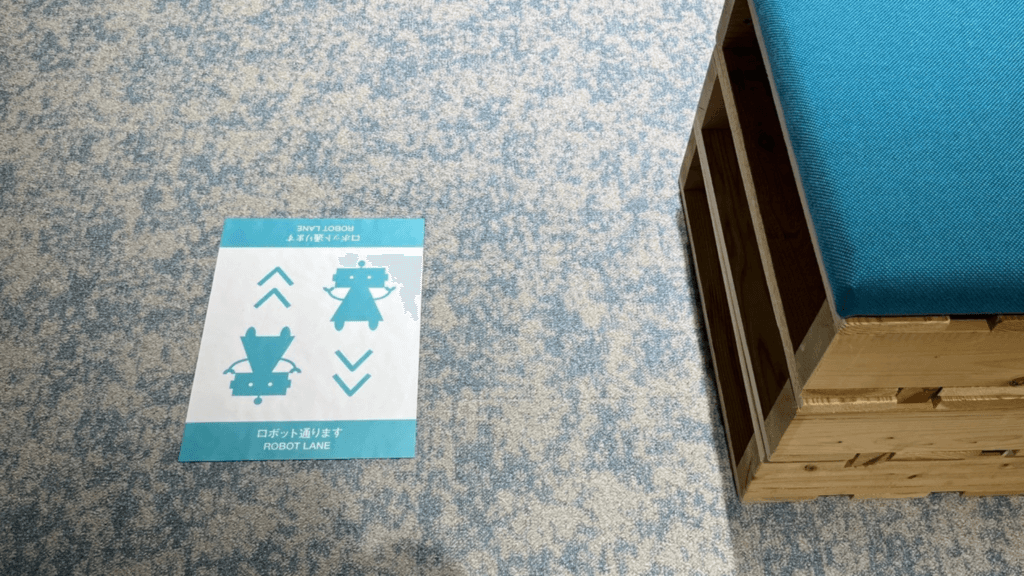
Signage is installed to indicate robot pathways and related zones.
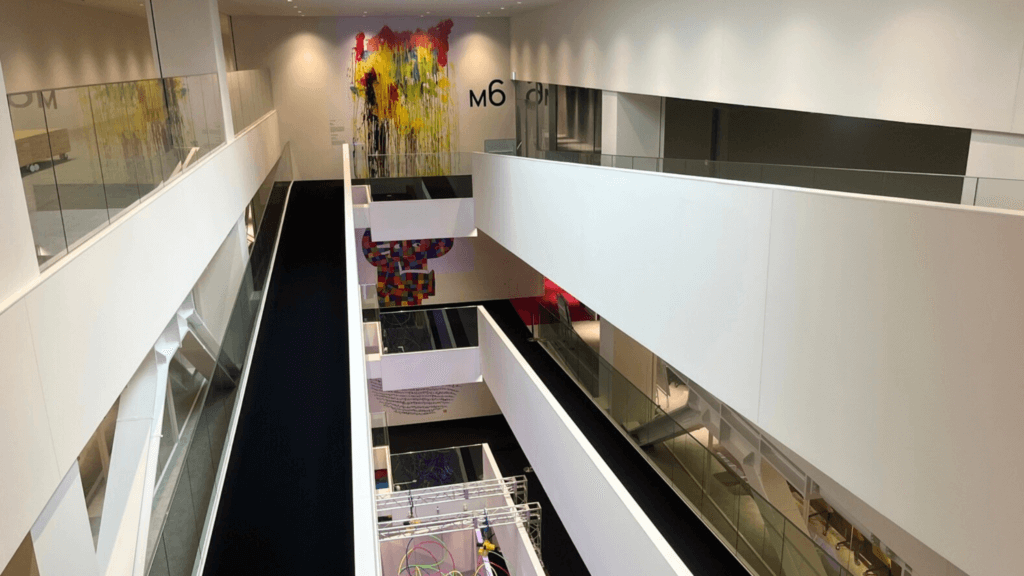
Ramps are essential to robot-friendliness and create a distinctive architectural landscape.
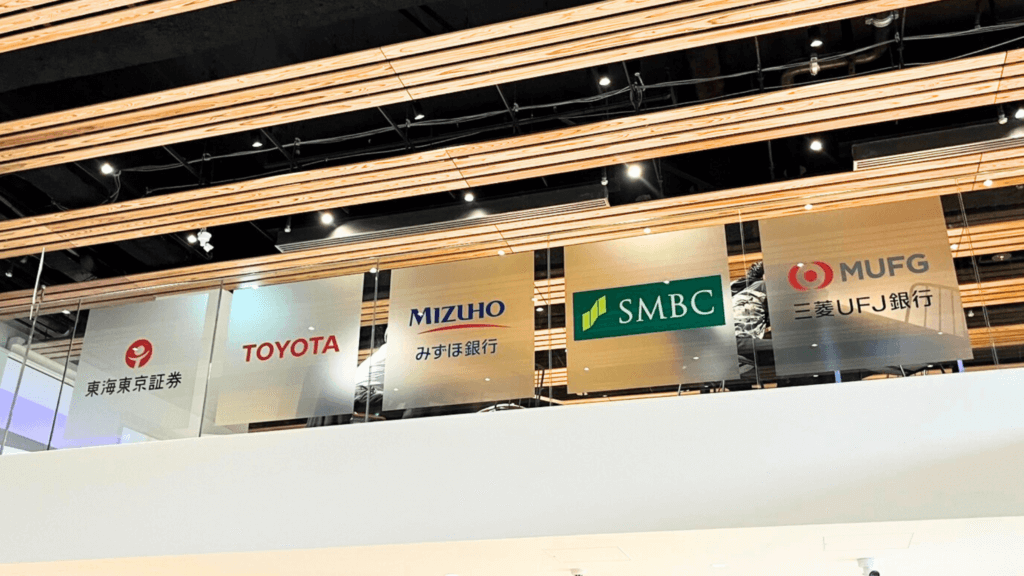
Feature 4 — A Lineup of Japan’s Leading Companies
Among the Premium Sponsors (in Japanese syllabary order) are: 株式会社アオキスーパー (Aoki Super Co., Ltd.), 株式会社十六フィナンシャルグループ (Juroku Financial Group, Inc.), ソフトバンク株式会社 (SoftBank Corp.), 東海東京証券株式会社 (Tokai Tokyo Securities Co., Ltd.), トヨタ自動車株式会社 (Toyota Motor Corporation), 株式会社みずほ銀行 (Mizuho Bank, Ltd.), 株式会社三井住友銀行(SMBC) (Sumitomo Mitsui Banking Corporation [SMBC]), 株式会社三菱UFJ銀行 (MUFG Bank, Ltd.).

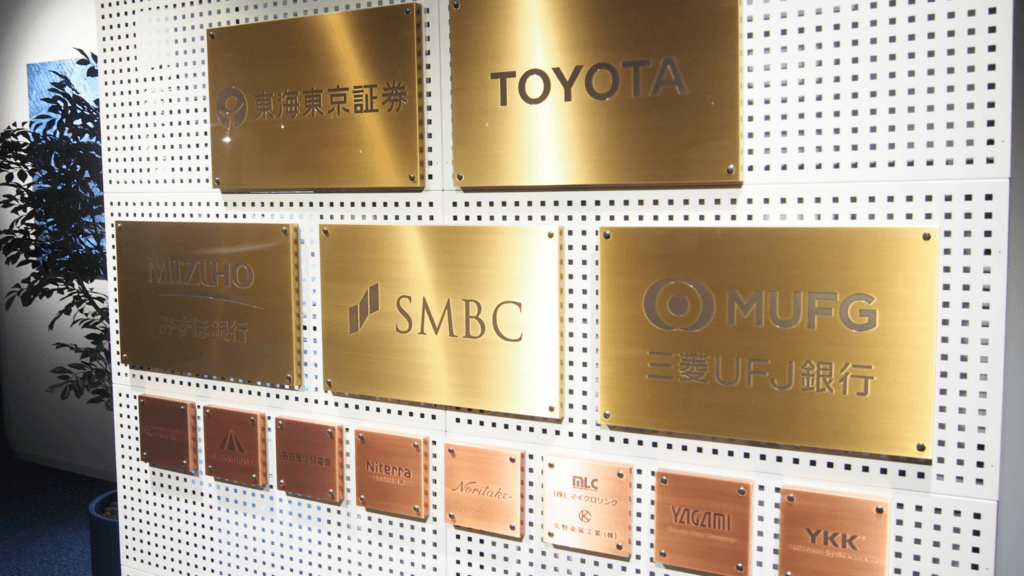
These are household names. Of the 41 sponsors, the logos of these eight Premium Sponsors are displayed; you can spot them by looking up toward the 2nd floor from the restaurant.
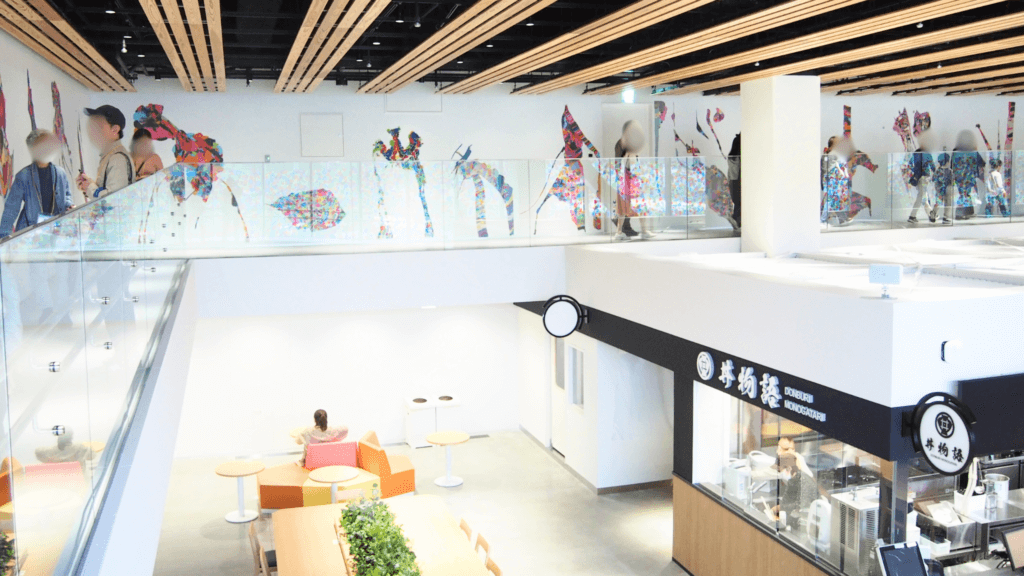
Feature 5 — Growing Together with Startups: Wall Art by “Isai” (Distinctive) Artists
Works by the startup Heralbony Inc. (株式会社ヘラルボニー) can be found throughout the facility. Founded in 2018 in Morioka, Iwate Prefecture, Heralbony signs licensing agreements primarily with artists with intellectual disabilities and delivers their art to society by applying it to a wide range of products and experiences. The company develops a licensing business around these creators as “isai” artists—artists with distinctive expression.
As you head up the ramp from the 1st to the 2nd floor, you’re welcomed by art inspired by Nagoya. Part of the fun is pondering the themes behind each piece.
According to the wall-text description of the installation:
With the mission “Unleash Your Difference,” Heralbony—a startup that manages licenses for art data created mainly by artists with intellectual disabilities and deploys it into diverse businesses—collaborated with its contracted artist 大路 裕也 (affiliated with やまなみ工房) to express seven Nagoya-related themes and motifs of people, animals, and nature that color the “city,” all through art, from his unique perspective.
For the next stage of corporate growth, together with startups.
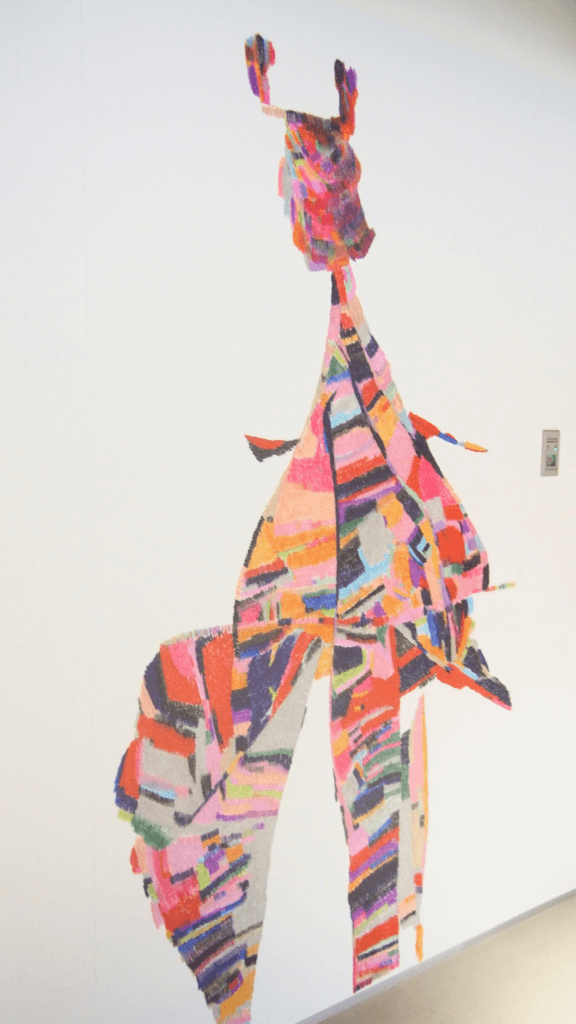
Mr. Ariga: “We believe art inspires business. It also expresses our wish to make this a place that supports people who take on challenges—not only in startups and business.”
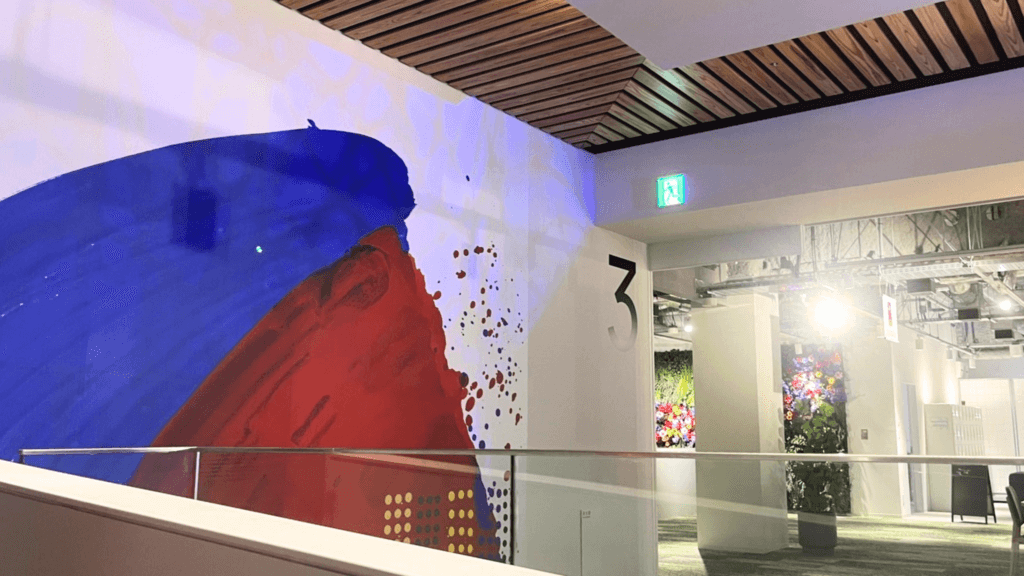
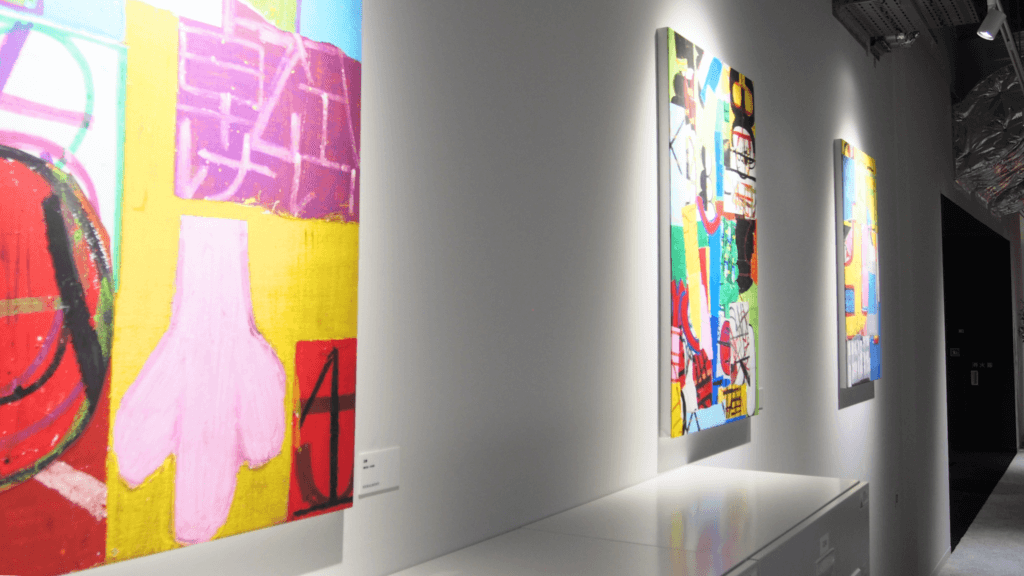
Many startups have been involved in construction and operations. Examples include: a digital twin platform by 株式会社Liberaware, next-generation lodging operations using DX by 株式会社SQUEEZE, and sustainable furniture products made from plant waste installed by 株式会社Spacewasp.
Here are a few examples of products that leverage startup technologies:
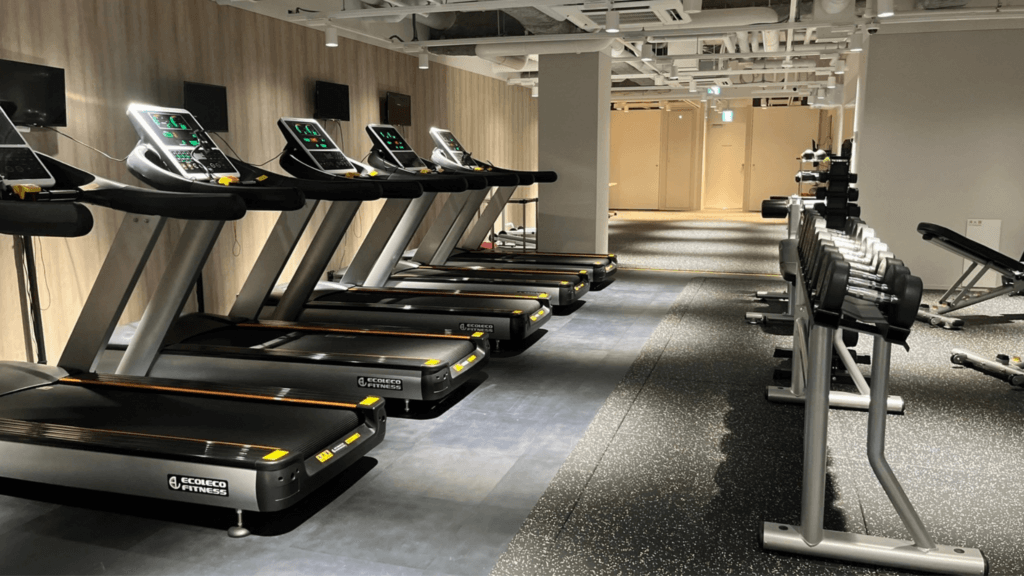
7th-floor fitness room: AI-equipped cameras enable unattended operation by issuing alerts in emergencies. We were told it’s available for about JPY 2,000 per month.
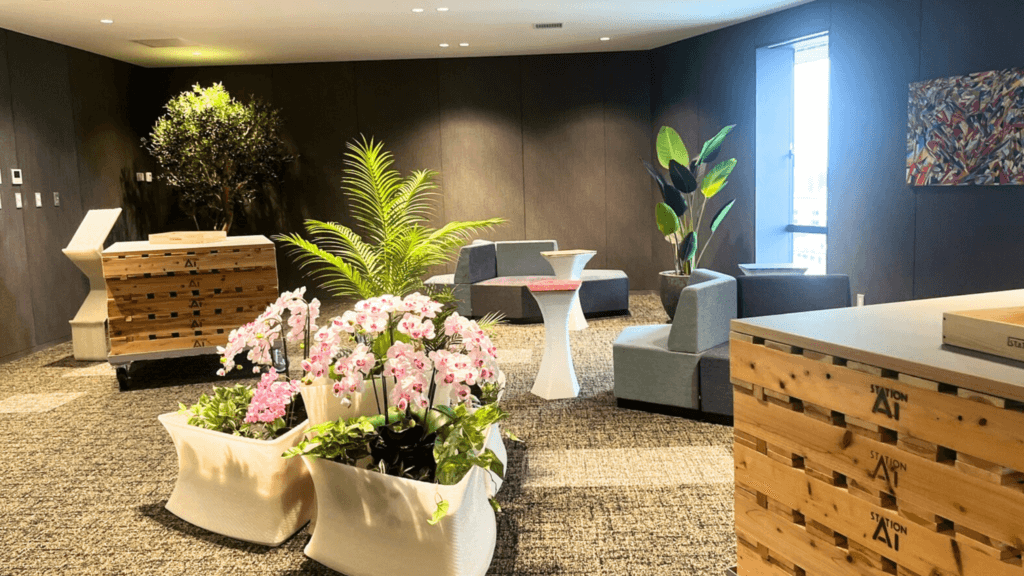
Planters and desks 3D-printed using plant-derived waste materials.

Feature 6 — Because There’s No Single Right Answer, We Don’t Make It “Rigid”
These wooden boxes have no prescribed use. They can be combined like puzzle pieces and used in various ways—as tables, chairs, and more. As we were told, the concept is “because there’s no single correct answer, we don’t make it rigid.”
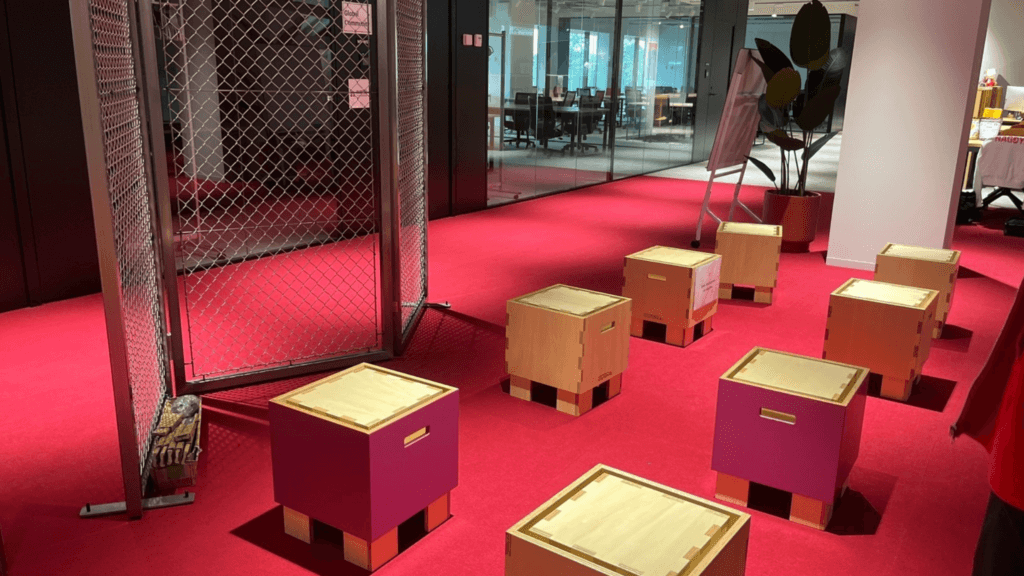
On another floor, they were arranged as chairs.
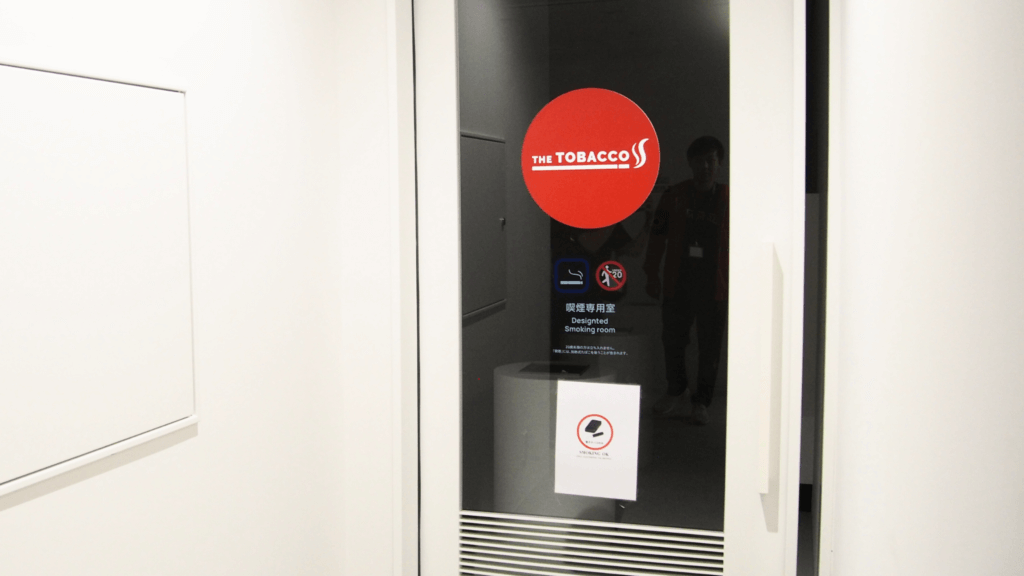
At one entrance that at first glance could be a café, you’ll actually find a smoking room—but not an ordinary one.
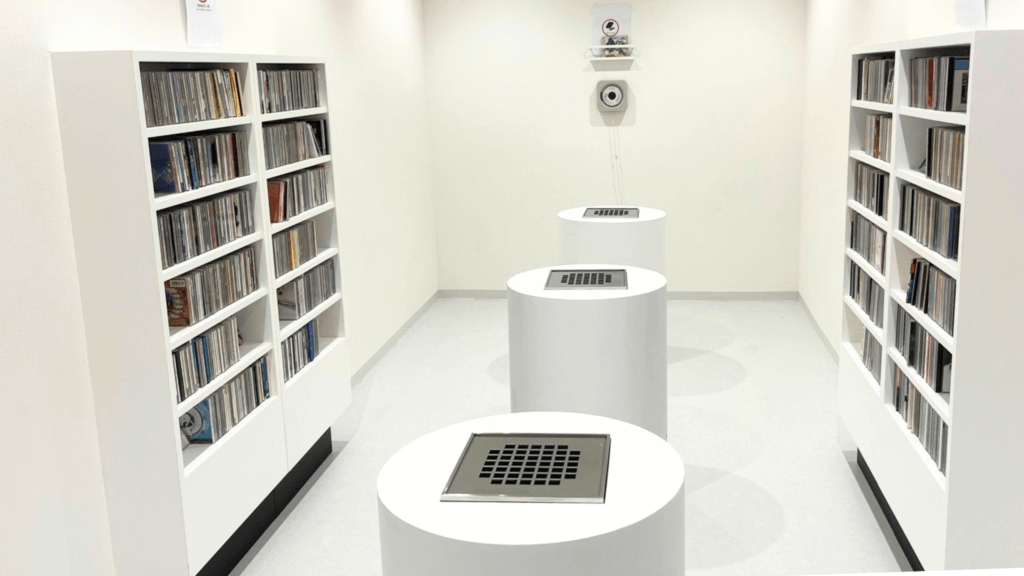
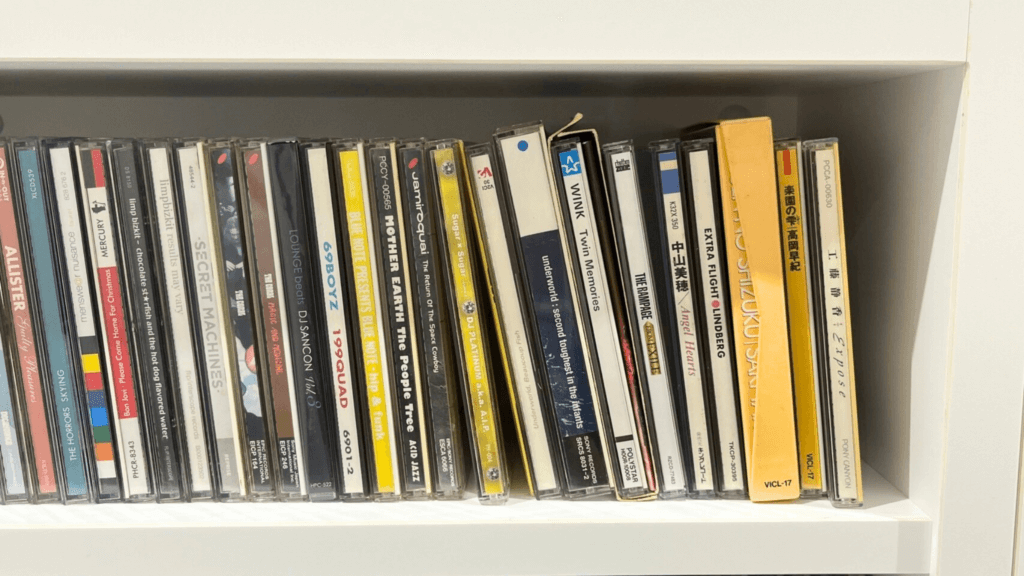
A CD rack is provided so you can choose and listen to your favorite music. With a nostalgic lineup—Miho Nakayama, Shizuka Kudo, Wink, even Mariah Carey—we heard that some visitors end up lingering here for about an hour.
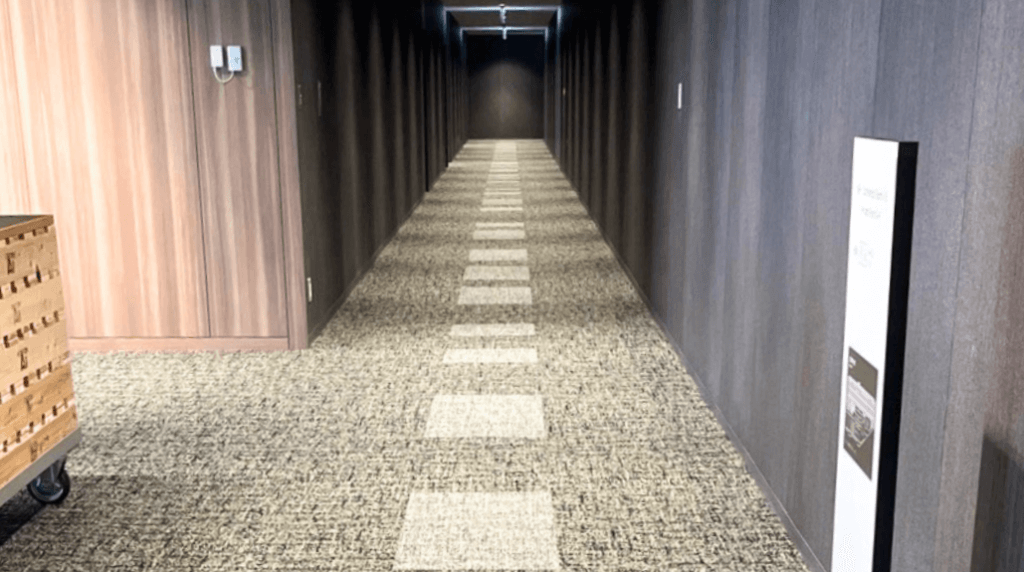
Just a floor? Not quite—there’s a twist here, too.
The carpet pattern encodes “STATION Ai” in Morse code, a touch that rekindles a childlike sense of play. It conveys a message: there’s no single right answer. Start by trying something; from there, challenges and businesses begin.
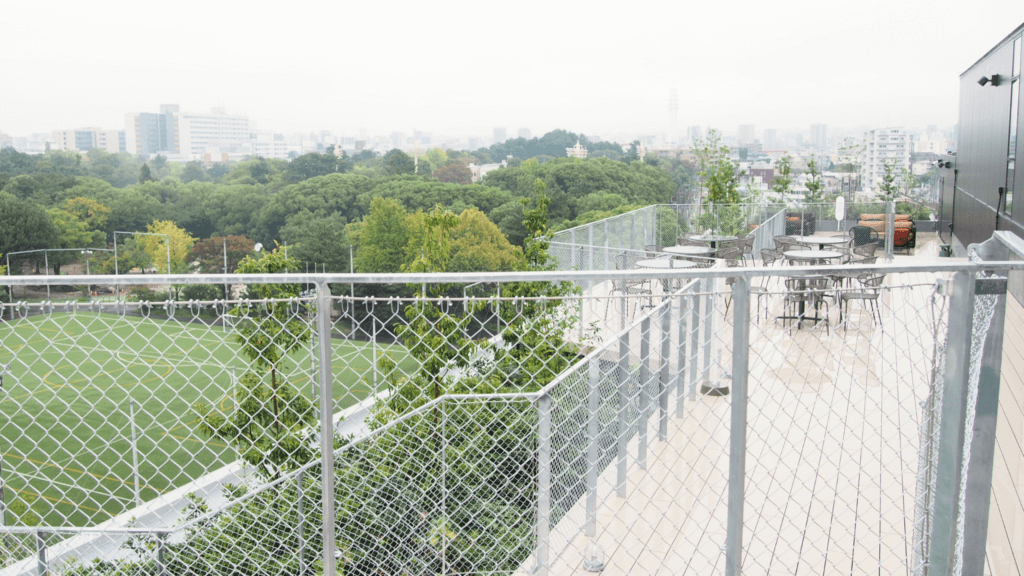
Feature 7 — Right Across: Nagoya Civic Assembly Hall and an Open Terrace Facing Tsuruma Park
Each floor also features decks that open to the outside. The outdoor terrace offers sweeping views of the greenery of Tsuruma Park—airy and refreshing. We spoke with Mr. Ariga here.
—As public relations, where will you focus going forward?
We see two axes: branding for people doing business, and branding we communicate to the general public as well. We hope to convey STATION Ai’s brand and concept—what makes this facility compelling.
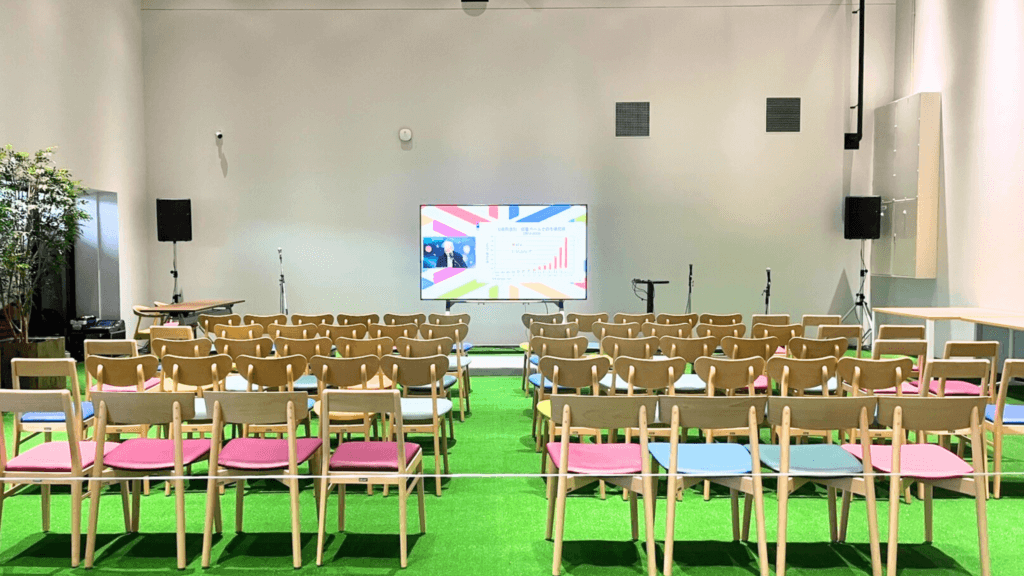
Editor’s Note: After the Visit
Covering STATION Ai drove home how essential the right environment is for advancing open innovation and creating new businesses. The facility is deliberately designed to spark organic interaction, with spaces where the general public, member companies, and startups can exchange ideas on equal footing. Mr. Ariga’s remark—that if interaction arises naturally and new businesses are born, the community has succeeded—felt emblematic of the concept. For those who operate venues and communities, STATION Ai’s approach offers many actionable insights.
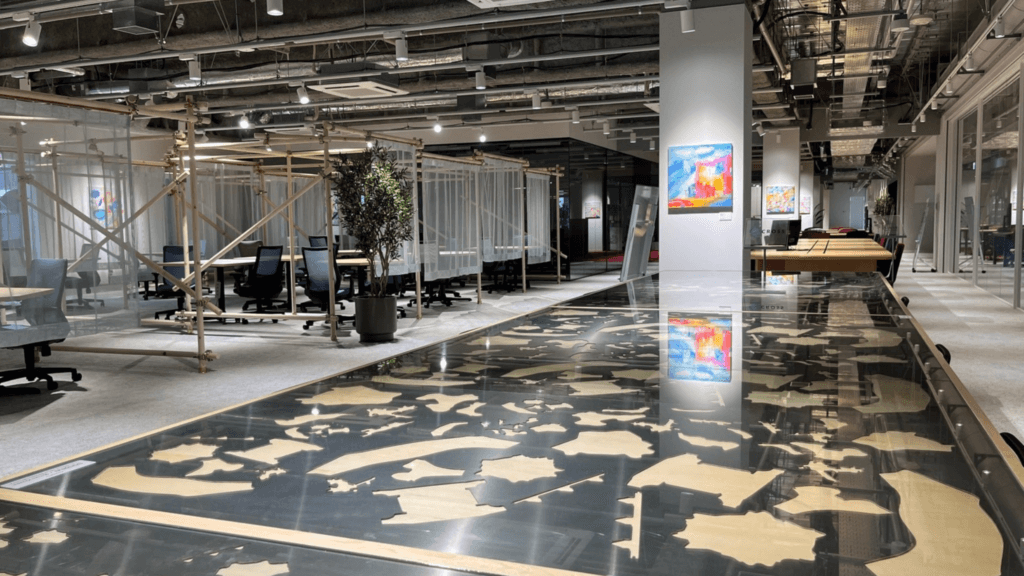
Aichi–Nagoya once had a reputation as barren ground for ventures and startups. In recent years, however, the startup scene has become increasingly visible, and with STATION Ai now in place, we can easily imagine hearing “that company is based at STATION Ai” or “it actually started at STATION Ai” with growing frequency. It makes us hopeful that Nagoya will emerge as a leading hub for startups.
-
Tourism EXPO Japan 2025 Aichi, Chubu & Hokuriku: Japan’s Largest Travel & Tourism Event—History and the First Aichi Edition at a Glance
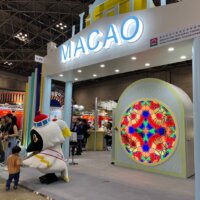
-
[On-site Report] The Near-Future Face of MICE and Events Found On-Site at IVS2025 / Introducing What Was Actually Used at IVS and the MICE- and Event-Oriented Services Showcased by Exhibiting Startups
